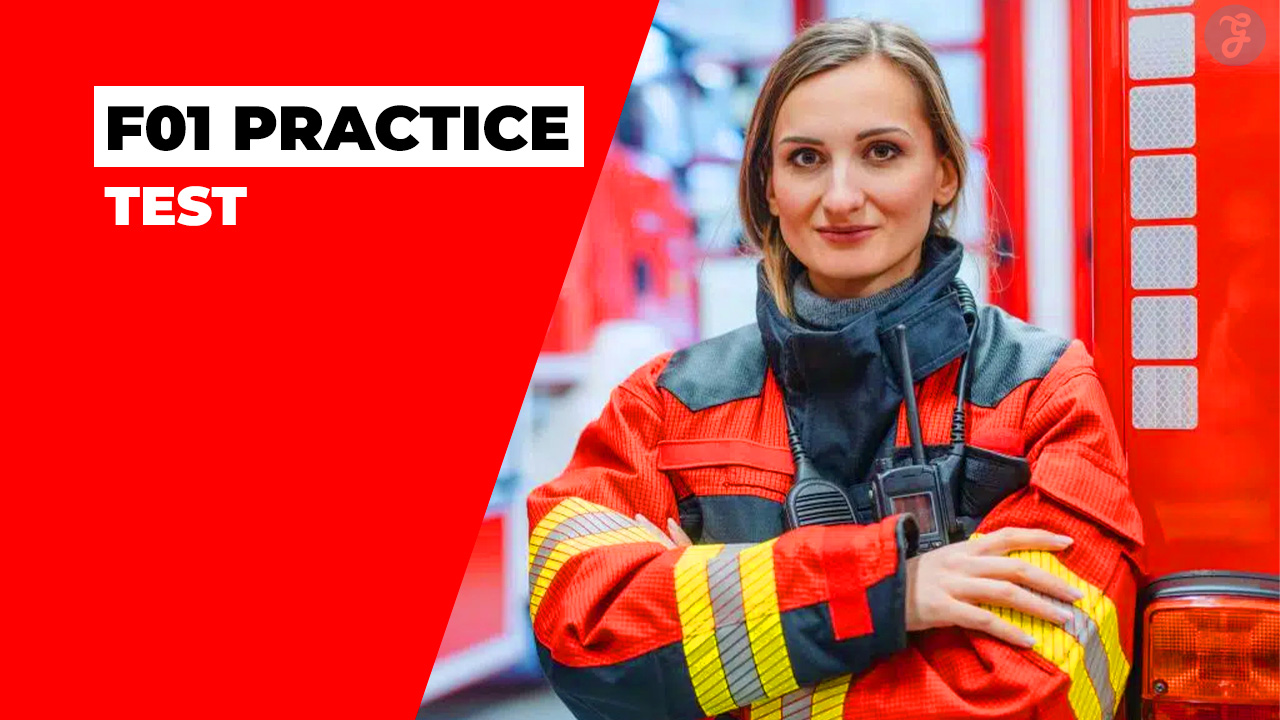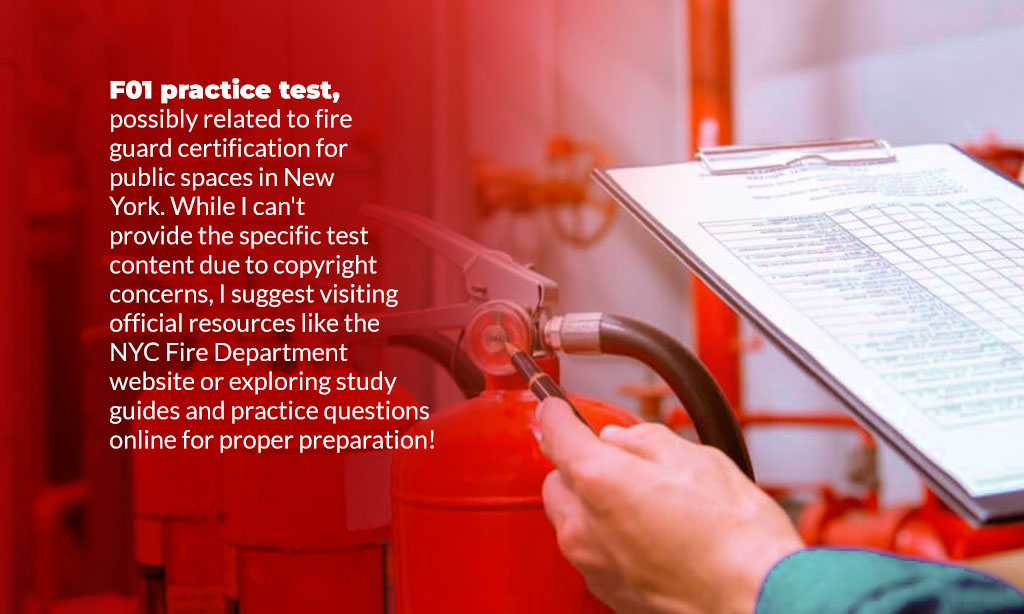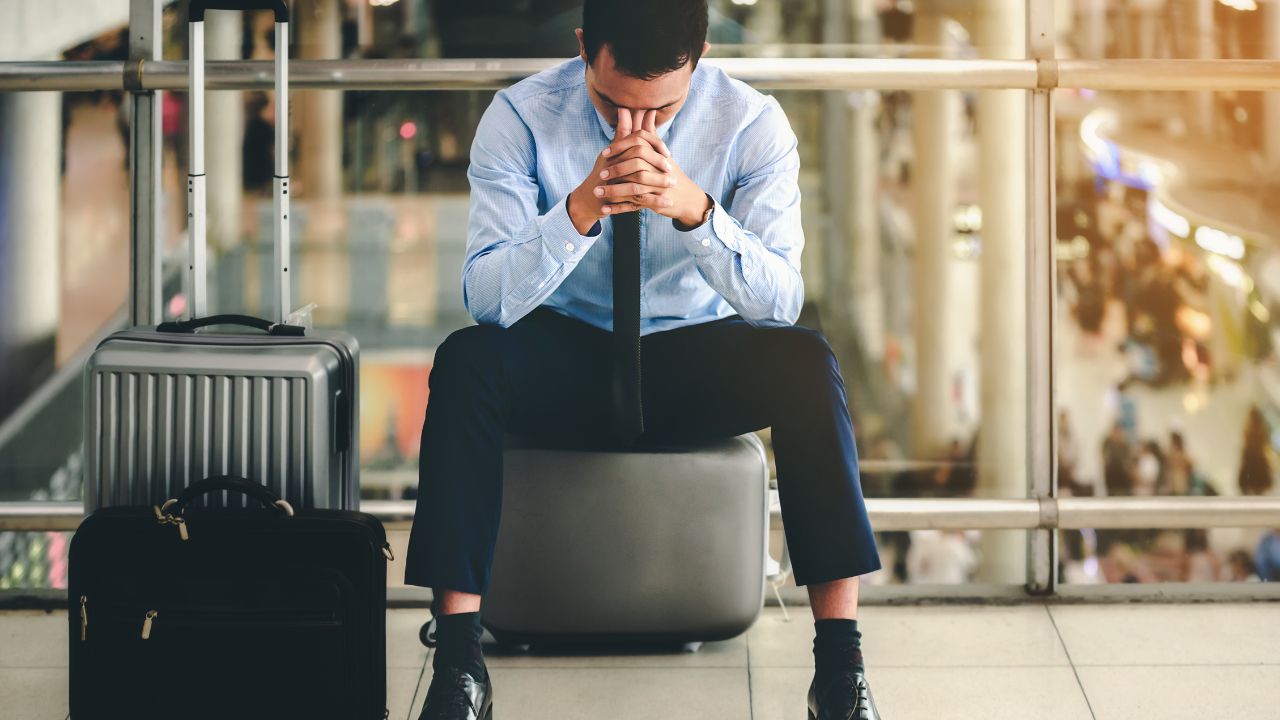Preparing for the F01 Fireguard Exam can feel like a mountain to climb. You know it’s important, but with all the fire codes, emergency procedures, and equipment guidelines to memorize, it’s enough to make your head spin.
Maybe you’re worried about missing key details or not feeling confident when exam day comes. That stress is normal!
The F01 Practice Test is here to help lighten the load! This test covers critical topics like fire prevention, evacuation plans, and proper use of safety tools such as fire extinguishers.
It breaks down complex information into straightforward practice questions that prepare you step by step.
Ready to learn how this guide can sharpen your skills? Keep reading!
Key Takeaways
- The F01 Practice Test includes 50 detailed questions. It covers fire safety topics like evacuation plans, fire alarms, and extinguisher usage.
- Fireguards must patrol hourly in out-of-service areas and follow strict protocols like keeping inspection records for 48 hours after a fire watch.
- Sprinkler systems and standpipes are key tools in emergencies, while Class C fires need special extinguishers for electrical equipment.
- The practice test boosts confidence by giving instant feedback on weak areas and tracking progress step by step before the exam.
- Study Firecodes 401, 408, and codes starting with 901 to better understand rules about emergency planning and protection systems.
Key Topics Covered in the F01 Practice Test
The F01 practice test covers key fire safety duties that every fire guard needs to know. It also sharpens your skills in handling emergencies and using life-saving tools like a fire extinguisher or smoke detector.
Fire prevention and safety protocols
Fire hazards can happen anytime. Fireguards protect people by following strict safety protocols. They patrol out-of-service areas every hour, ensuring no risks go unnoticed. Fire alarm pull stations must be placed 4 feet above the ground and within 5 feet of exit doors for easy access during emergencies.
Inspection records must stay on file for at least 48 hours after a fire watch ends. This helps track safety measures taken and reduces future risks. By observing these steps, fire guards play a key role in maintaining building and occupant safety.
Emergency response procedures
Activate the fire alarm immediately if you spot a fire. Call 911 without delay. Your quick response can save lives. Certified individuals holding F-01, F-32, or F-36 certifications must perform duties during such events.
An impairment coordinator oversees areas up to four hours and sizes not exceeding 50,000 square feet.
Follow evacuation plans posted in the building. Guide people calmly to exits while avoiding elevators. Always stay alert for signs of smoke or flames spreading quickly. Use a fire extinguisher only if trained and safe to do so.
Knowing these steps boosts your ability to handle emergencies effectively.
Continue learning about fire protection systems next!
Fire protection systems and equipment usage
Sprinkler systems are vital in fire safety. These systems release water when triggered by heat, controlling or extinguishing flames quickly. Wet sprinklers stay charged with water at all times, helping them respond fast to fires in buildings.
Standpipe systems are key tools for firefighters in tall structures. They provide easy access to water during emergencies. For Class C fires involving electrical equipment, you need a special extinguisher designed to handle such dangers safely.
Using the right equipment can prevent damage and save lives during fire emergencies.
Benefits of Taking the F01 Fireguard Practice Test
Practicing helps you feel ready and sharp for exam day. It builds your knowledge on fire safety, making tricky questions less stressful.
Increased exam preparedness
The F01 practice test includes 50 detailed questions. It covers fire alarm response, fire safety protocols, evacuation procedures, and fire extinguisher types. Each question mimics the real exam, helping you grasp key topics like combustibility and flammability or how to handle a class A fire emergency.
Instant feedback makes studying easier. You’ll know your weak spots quickly and can improve before test day. Performance tracking shows your progress step by step, ensuring that no topic is left untouched.
With focused preparation on manual fire systems or standpipe operations, passing the F-01 exam becomes much simpler.
Improved confidence in fire safety knowledge
Building fire safety knowledge strengthens your ability to handle emergencies. Practice tests simulate real-life situations, like spotting potential fire hazards or using a fire sprinkler system effectively.
These tests mirror actual certification test questions, helping you feel more prepared and capable.
Immediate feedback pinpoints weaker areas. For example, if you struggle with communication protocol or emergency evacuation steps, focused practice can improve those skills quickly.
Reinforcing these lessons boosts confidence and ensures quick responses in case of a fire emergency—key for anyone managing building safety or performing fire watch duties.
Tips to Ace the F-01 Fireguard Exam
Prepare by studying fire codes, safety procedures, and equipment guidelines in depth. Practice with real test questions to sharpen your understanding and speed.
Familiarize yourself with fire codes and regulations
Study Firecodes 401 and 408. These focus on Emergency Planning and Preparedness. Learn about the rules for factory spaces; they often deal with hazardous materials. Building codes tied to fire safety are critical too, especially fire codes starting with 901, which cover fire protection systems.
Understand how these rules apply during a fire guard test. For example, knowing what a standpipe is or how an alarm system works could come up in questions. Regulations help you respond better in emergencies and handle potential fire hazards properly.
Practice with sample questions and scenarios
Mastering fire safety needs practice. Use sample questions and scenarios to sharpen your skills. The F01 practice test helps you prepare for real challenges. With 25 test questions, it gives instant feedback on your answers.
Quiz platforms like ProProfs or Quizlet can make learning fun. Memorize flashcards on topics like fire drills, flame detectors, standpipes, and more. Test yourself on fire alarm systems or handling emergencies in a building’s watch condition.
These exercises train you to spot hazards quickly during critical moments.
Takeaways
Preparing for the F01 practice test doesn’t need to be stressful. The practice test helps you understand fire safety and handle emergencies like a pro. Each question builds your confidence and sharpens your skills.
With effort and focus, passing the exam becomes much easier. Start practicing today—your certificate is within reach!
FAQs on F01 Practice Test
1. What is the F01 Practice Test?
The F-01 Fireguard Practice Test helps you prepare for the FDNY exam by providing test questions and answers focused on fire safety, fire protection systems, and handling emergencies.
2. Who needs to take the F-01 Fireguard Exam?
Anyone responsible for maintaining a fire watch or designated by a building owner to ensure fire safety during system impairments must pass this test.
3. What topics are covered in the practice test?
The practice test includes multiple-choice questions about active fire protection, recognizing potential fire hazards, responding to emergencies, and performing systematic surveillance of buildings.
4. How can I use flashcards or study materials effectively for this exam?
Flashcards help you memorize key terms like “standpipe,” “fire hydrant,” or “alarm device.” They also make it easier to recall important concepts like handling toxic substances or performing fire watch duties.
5. Why is passing the F-01 exam important?
Passing ensures you’re prepared to handle fires, maintain safety precautions, and protect building occupants in New York City under FDNY standards.
6. Can I rely solely on quizzes and trivia for preparation?
While quizzes provide helpful review material, studying detailed topics such as firefighting systems and emergency responses is crucial for fully understanding your role during a condition where a fire might occur.







































